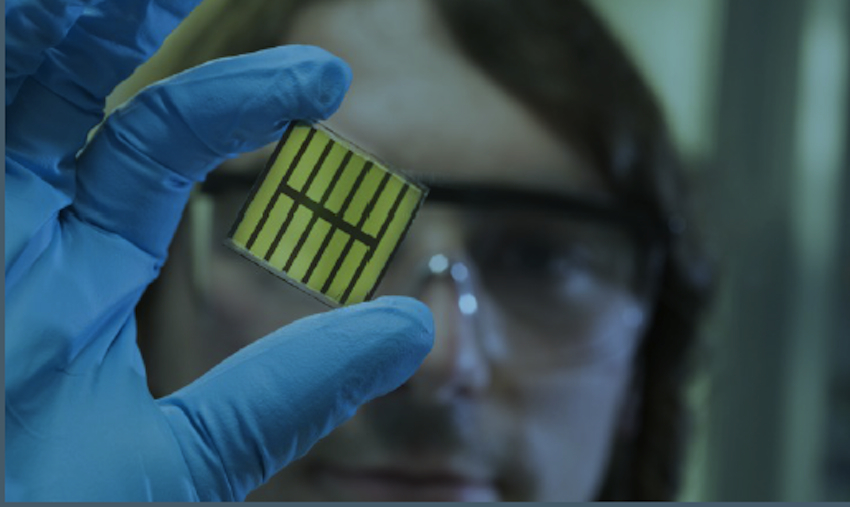Tandem Solar: two layers are better than one

Perovskite/ CIGS semiconductor pairing promises to boost photovoltaic efficiency
Researchers engaged in a project called Capitano (funded by the German Ministry for Economic Affairs and Energy) are combining thin-film solar modules based on perovskite semiconductors and CIGS.
This combination, they think, is the key to building remarkably efficient tandem solar cells with all the advantages of thin-film technology and an efficiency factor that could top the 30-percent mark. The Karlsruhe Institute of Technology (KIT), the Schwäbisch Hall-based enterprise NICE Solar Energy, and the Centre for Solar Energy and Hydrogen Research Baden-Württemberg (ZSW) have joined forces in this project with ZSW acting as coordinator.
Tandem solar modules consist of two different types of modules in a layered array that puts the solar spectrum to much better use than any single solar cell. This combination is far more efficient. Multi-junction solar cells’ efficiency could extend beyond 30 percent, in theory. The ceiling for single-layer silicon solar cells, for example, is 29 percent.
Several variants of tandem modules are now available. The perovskite solar cell in the CIGS/ perovskite version converts the light in the visible part of the solar spectrum into electricity. The underlying CIGS solar cell absorbs the light in the near-infrared spectrum that penetrates the perovskite solar cell. One of the reasons why these tandem solar cells look to be so promising is that they could be realised as thin-film technologies on substrates of several square meters. This would not only boost efficiency; it would also cut costs.
Commenting on this consortium’s excellent skill-set, Michael Powalla, ZSW board member, head of the Photovoltaics division at ZSW and professor at KIT, says, “Given the wide spectrum of skills at work in this project ranging from fundamental science to mass manufacturing, I expect great advances to be made in the further development of this promising technology.” Dr. Ulrich W. Paetzold, head of the junior research group at KIT, adds, "We are developing the next generation of highly efficient thin-film tandem cells with an efficiency potential above 30 percent. Promising applications include highly efficient solar modules for building-integrated photovoltaic solutions, for example.”
The Capitano project
Launched in July 2019, the Capitano project is to run for three years with the German Ministry for Economic Affairs and Energy providing around €5.2 million in funding. This project aims to develop cells with higher yet stable efficiency factors, and then combine these cells to make efficient tandem solar modules. The industry partner NICE Solar Energy will assess the possibility and cost of manufacturing these modules on an industrial scale.
To achieve this project’s goals, the ZSW is developing CIGS modules with an adapted bandgap and optimised surface, and investigating semitransparent perovskite solar cells and highly efficient and transparent modules. Eager to test industrial processes such as slot-die coating for the perovskite layer, researchers are focusing on producing optimised intermediate layers and transparent contact layers that have been adapted accordingly. The results will flow into efforts to make tandem solar cells and modules that are interconnected in monolithic array. These scientists also want to assess the manufacturing process’s ecological impact.
KIT is doing its part for this project by developing new materials, processes, and prototypes for manufacturing semi-transparent perovskite solar cells and highly transparent modules with an adapted bandgap a high efficiency factor. The institute’s researchers are particularly interested in exploring scalable manufacturing processes such as slot-die coating and gas-phase vacuum deposition. Its scientists are developing a light management concept to improved light yield amid the complex architecture of the tandem solar cells. They have also been tasked to calculate yields.
NICE Solar Energy GmbH is providing small CIGS solar modules from its CIGS innovation line to underpin the other two partners’ efforts to make tandem solar modules. The enterprise will then assess these tandem modules’ suitability for manufacturing at industrial-scale, 300 megawatts capacity. A cost comparison with single-junction CIGS solar modules is also on the company’s agenda.


































